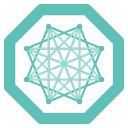Pathology Image Labeling Comes to MONAI
Project MONAI is continuing to expand into the field of Pathology. With the release of MONAI Label v0.4, we have new features, sample applications, and viewer integrations that will help you get started with annotating Pathology images.
Viewer Integration
MONAI Label now integrates with three pathology viewers, including QuPath, Digital Slide Archive or DSA, and CVAT. You can choose your favorite viewer and quickly start labeling pathology images today.
Sample Applications
MONAI Label also provides new Pathology based sample applications that can be used as an easy starting point or as the basis for your custom annotation application.
These three applications include Segmentation Nuclei, DeepEdit Nuclei, and NuClick.
Segmentation Nuclei gives a reasonable basis for multi-label segmentation, including labels for Neoplastic Cells, Inflammatory, Connective and Soft Tissue cells, Dead cells, and Epithelial; however, it doesn’t provide the ability to do interactive segmentation.
DeepEdit Nuclei combines both Interactive and Auto Segmentation that combines all of the labels from the standard segmentation model into a single Nuclei label.
Last is an implementation of NuClick, a Unet-based approach to speed up collecting annotations for microscopic objects requiring minimum interaction from the annotator.
Performance
One of the most significant pain points in the Pathology workflow is the performance of loading images and performing inference. MONAI Label focuses on performance throughout the Pathology Workflow, improving time to inference on patches and whole slide images and offering the ability to use RAPIDS cuCIM to speed up the loading of images.
Inference Performance
For performance on Patches and Whole Slide Images, both NuClick and DeepEdit perform significantly faster than typical Machine Learning Nuclei Detection, with DeepEdit performing up to six times faster than the standard NucleiDetection algorithm, as shown below. We measured performance with varying amounts of nuclei in the image, and the results show up to a 6x speedup in inference. This performance increase can mean the difference between 3 minutes for GPU-based inference or 20 minutes for CPU-based inference.
RAPIDS cuCIM
A significant portion of a typical deep learning pipeline is spent on I/O. For Pathology, this is the case since images are typically extremely large, and the process of loading and encoding these images can become a significant bottleneck. That’s why MONAI has integrated RAPIDS cuCIM as one of its optional image loaders.
Below you’ll see the performance increase of up to 6x depending on the number of threads being used for loading an image compared to an alternative library like OpenSlide.
Pathology Adoption of Deep Learning
MONAI Label is creating a starting point for Pathologists and Data scientists to work together and utilize the benefits of Deep Learning. By enabling a workflow that integrates directly into a Pathologist viewer and allowing for continuous learning, MONAI aims to accelerate the adoption of Deep Learning in Pathology.
“MONAI Label will enable pathologists and scientists to build accurate models without knowing anything about AI. This is an important step in making AI a universal tool for research.”
— Lee A.D. Cooper, PhD — Associate Professor of Pathology, Director, Computational Pathology, Director, Center for Computational Imaging and Signal Analytics, @ Northwestern University Feinberg School of Medicine
If you’re interested in contributing feedback to the direction of our Pathology work in MONAI, we’ve created a survey to help understand the community’s needs.
Citations:
Diaz-Pinto, Andres & Alle, Sachidanand & Ihsani, Alvin & Asad, Muhammad & Nath, Vishwesh & Pérez-García, Fernando & Mehta, Pritesh & Li, Wenqi & Roth, Holger & Vercauteren, Tom & Xu, Daguang & Dogra, Prerna & Ourselin, Sebastien & Feng, Andrew & Cardoso, Manuel Jorge. (2022). MONAI Label: A framework for AI-assisted Interactive Labeling of 3D Medical Images.
Navid Alemi, Mostafa Jahanifar, et al. “NuClick: a deep learning framework for interactive segmentation of microscopic images.” Medical Image Analysis 65 (2020): 101771.
Jahanifar, Mostafa, Navid Alemi Koohbanani, and Nasir Rajpoot. “Nuclick: From clicks in the nuclei to nuclear boundaries.” arXiv preprint arXiv:1909.03253 (2019).
